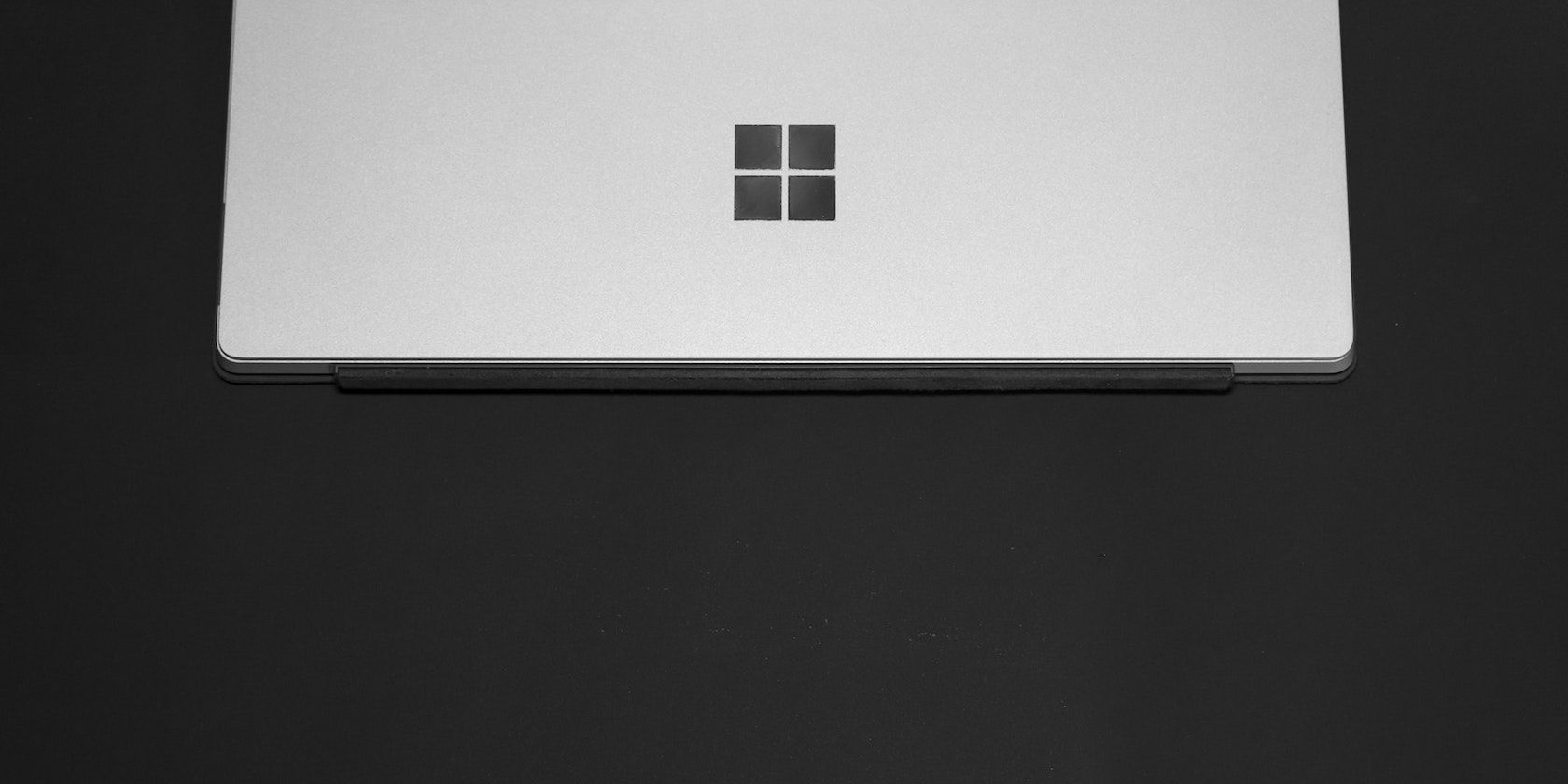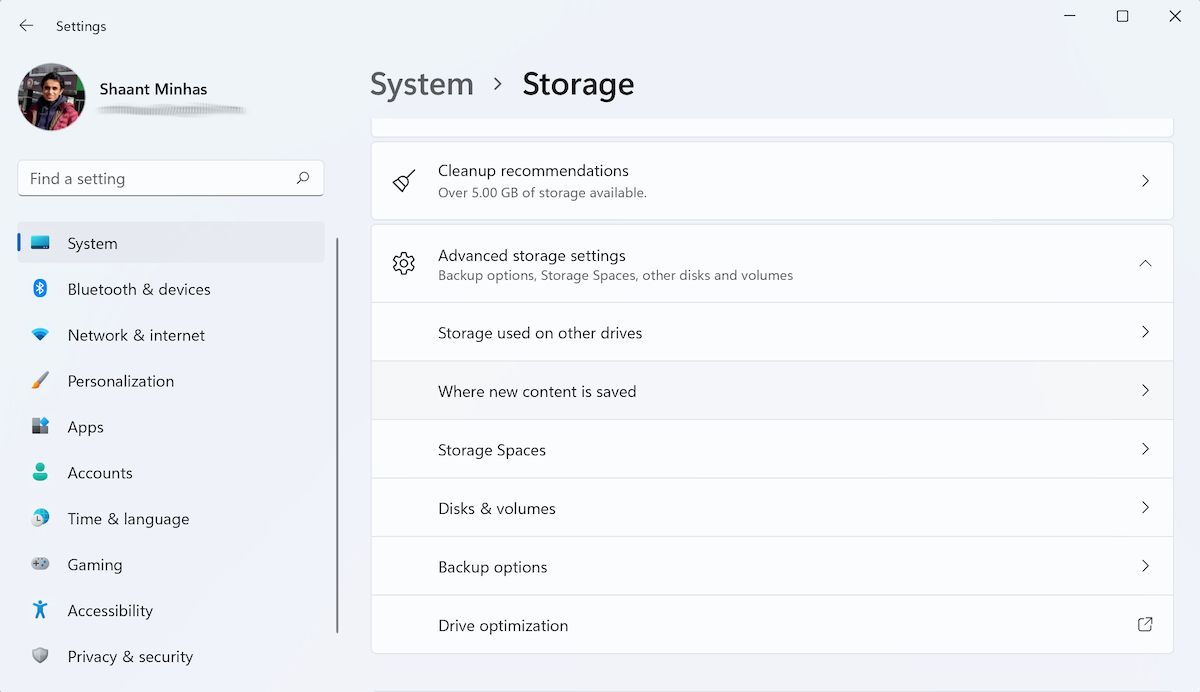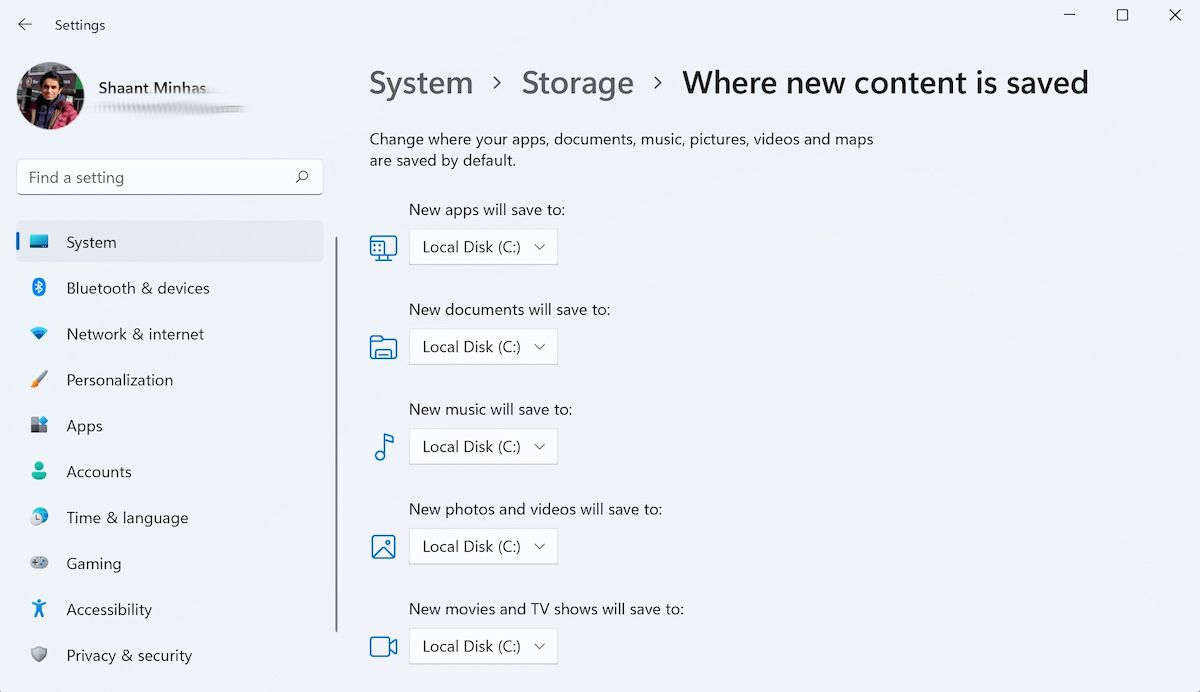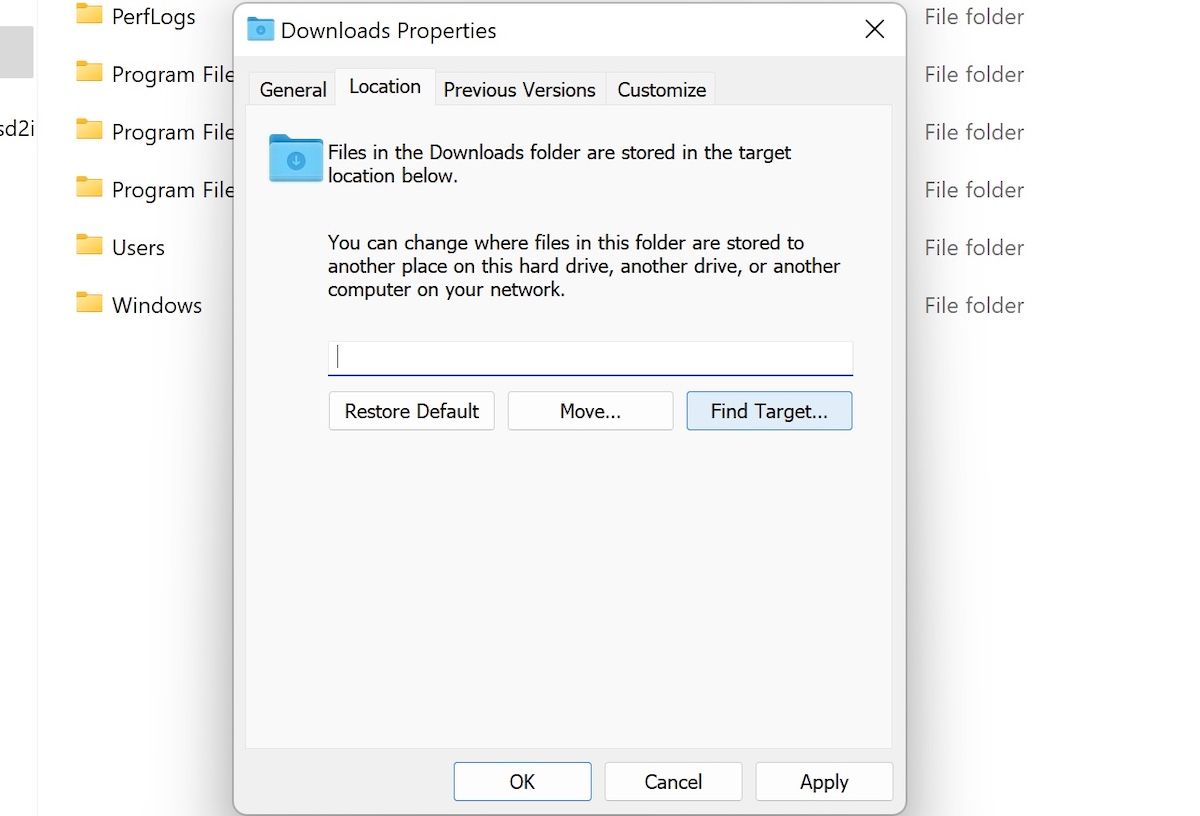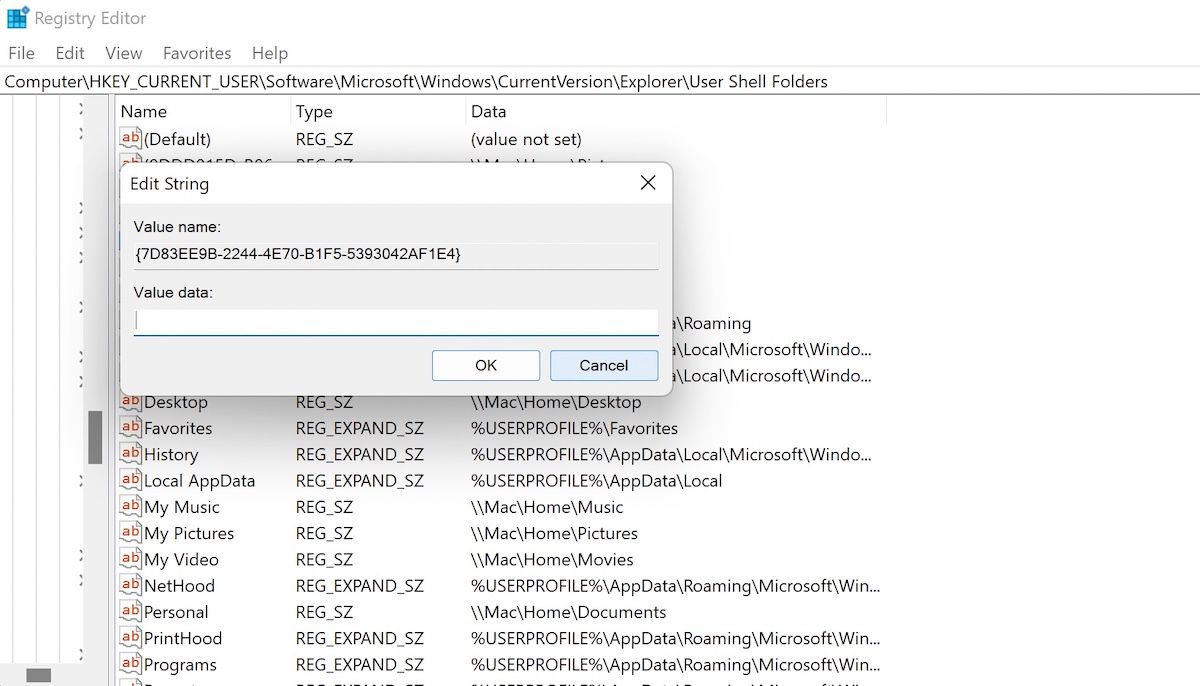When you download any file, folder, or app from the internet, your Windows PC stores them at a location set by default by Microsoft. However, you don’t have to stick with this default location.
If you prefer to download files to a different location, it's easy to set it up. So, here's how to change the default save location on Windows 10 and 11.
How to Change the Default Save Location on Windows 10 and 11
As it happens for almost anything with Windows, if you want to change any default settings, you’ll have to go through the Windows Settings at one time or the other. To open the Settings app, head to the Start menu search bar, type in ‘settings,’ and select the best match. Alternatively, hit the Win + I shortcut.
From there, simply follow the steps below:
- Head to System and select Storage.
- Next, click on Advanced storage settings and select Where new content is saved.
In the next window, you’ll see the default locations where different PC items—be it a file, folder, apps, and so on—are saved. From here, you can tweak the settings and choose a location that you find more appropriate for storing your files.
All you’ve to do is click on the drop-down menu next to a specific item and select a new location. For instance, we’ll show you how to change the default location of new documents, and from there, you can follow a similar approach for other items. Here’s how:
- Click on the drop-down menu for New documents will save to: and select a new drive.
- Click on Apply.
That's it. From now, your documents will get saved at the new location.
How to Change the Default Save Location Through File Explorer
Similar to your documents and app, you can change the download location of your new files. Instead of the Settings app, however, you’ll have to rely on File Explorer in this case. Here’s how:
- Launch the File Explorer.
- Expand Quick Access and right-click on Downloads.
- Click on Properties.
Now select the Locations tab from here, and change the Download path by typing and copying the new location you’d like to save your downloads to. Alternatively, click on Find Target to choose the location.
Finally, click on Apply.
As soon as you do this, you’ll see a new dialog box asking if you want to take your old files to the new location as well. From our experience, we believe it’s best to do that—so click on Yes.
Click on OK after the system finishes copying the files.
How to Change the Default Save Location Through the Registry Editor
Last but not least, we can use the Registry Editor. The Registry Editor is a free GUI tool from Microsoft that lets you edit your Windows registry, a hierarchical database of low-level settings of your Windows operating systems. Among a host of these settings, the Registry Editor comes with a setting that decides where your files are downloaded.
With the Registry editor, you can tweak this default download location. Here's how:
- Head to the Start menu search bar, type in 'run,' and select the best match.
- In the Run dialog box, type in "regedit.exe," and click on OK.
-
On the Registry Editor, navigate to the following path:
HKEY_CURRENT_USER\Software\Microsoft\Windows\CurrentVersion\Explorer\User Shell Folders - From there, click on the file with the Data value as "%USERPROFILE%\Downloads".
- In the Value data section of the Edit String window of your PC, enter the new location or path and click on OK.
Your default download location will be changed from here on. Restart your PC for the changes to take effect.
Changing the Default Save Location on Windows 10 and 11
Whether it’s the lack of space or you just want to store your files somewhere else from now on, with these methods, you can now tweak your default save locations on Windows with ease. The Windows operating system comes with plenty of pre-set settings and configurations.
However, over time you might want to configure and customize your PC in a way that suits your workflow better. So don’t hold back and explore all the different ways you can change your default Windows settings.

